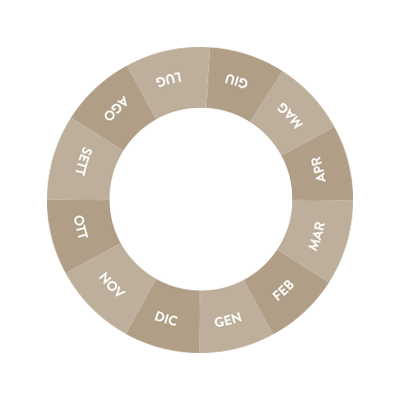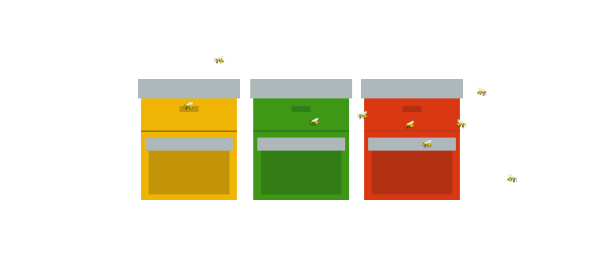


Among the charred remains of the Etruscan room of a 6th century craftsman a fragment of honeycomb and the remains of a bee attached to a piece of silver fir have been discovered at the archaeological site in Forcello: a sure sign that the room once contained a beehive for honey production.
Honey is a substance produced by bees through the collection of flower nectar, or the sap of different plant species, accumulated on plants and flowers (what is known as honeydew). The worker bees  forage and collect these sugar solutions during their flights in search of food and contact with plants, storing them
forage and collect these sugar solutions during their flights in search of food and contact with plants, storing them  in the honey sac and transferring them later to other bees in the hive, who then insert them into the honeycombs. The liquid nectar undergoes a series of chemical transformations, enriched by enzymes produced by bees and undergoing significant water loss. After
being sealed with beeswax, it is left to mature until it is ready for extraction from the combs. The nectars make the honey unique, and they depend on the flowering plants and flowers
in the honey sac and transferring them later to other bees in the hive, who then insert them into the honeycombs. The liquid nectar undergoes a series of chemical transformations, enriched by enzymes produced by bees and undergoing significant water loss. After
being sealed with beeswax, it is left to mature until it is ready for extraction from the combs. The nectars make the honey unique, and they depend on the flowering plants and flowers  that the bees are drawn to, and also
that the bees are drawn to, and also  by seasonal rainfall.
by seasonal rainfall.


There is a forest at Corte Bancare (Borgofranco sul Po) with a high concentration of wild and local lime, and it is the heart of the ApeTilia project, dedicated to spreading beekeeping and honey production through the area. The project includes the construction of a multimedia museum dedicated to bees, honey and products derived from the lime tree.